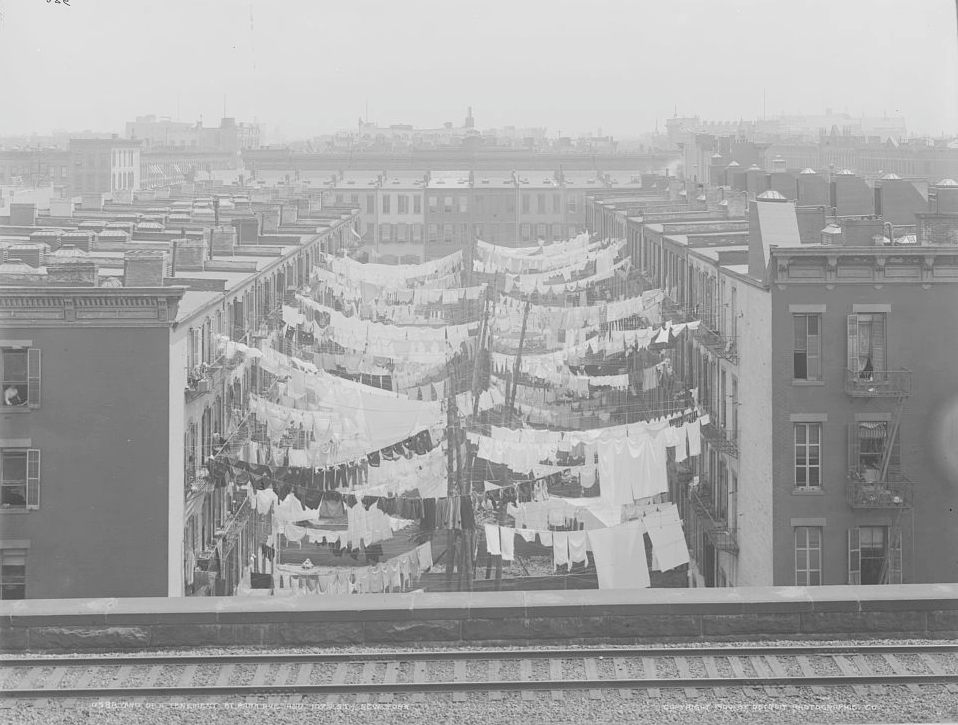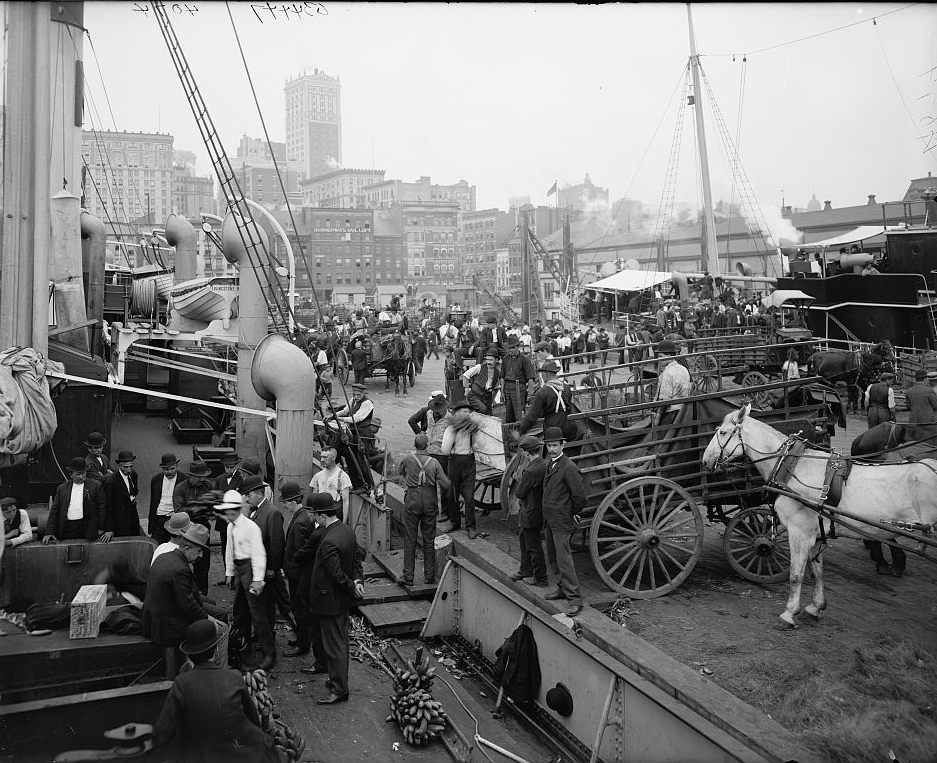The 19th-Century Night Soil Men Who Carted Away America’s Waste
Cities used to be literally full of crap.

The Lower East Side, New York, c. 1900. (Photo: Library of Congress/LC-D401-71269)

On a summer day in 1873, a cart stood on 6th Avenue in New York City filled to the brink with raw human waste. The cart was uncovered—its contents exposed to the air and to the passers-by who retched and gagged as they scurried away. Excrement dipped off the sides of the cart, and the sidewalks and gutters were smeared with the stuff. The stench was so strong that it could be smelled from more than a block away. It was another day in pre-sewer America.
Before municipal sewer systems, excreta piled up in the privies of people’s homes—essentially a deep hole in the ground. But these poop storage units did not have unlimited capacity.
When the privies were eventually filled, that’s when the night soil men were called in.

“Night soil” was the name euphemistically given to human waste because it was removed from privies under the cloak of darkness so that polite society would be spared from confronting its own feces as the men carted the crap away, leaving a trail of stench in their wake. Each year in cities across the country, thousands of carts brimming with excrement rattled through the night streets. This was an antiquated solution to a modern problem: America’s cities were full of crap.
As cities grew larger and denser in the 19th century, the paltry urban infrastructure could not handle the sheer tonnage of human waste its residents were producing. New York was the dirtiest city of them all. In 1844 it was estimated that Manhattanites alone produced nearly 800,000 cubic feet of excrement—that’s enough poop to fill the trunks of about 53,000 mid-sized cars.

A night soil man in Baltimore. (Photo: Public Domain)
In New York, the reeking loads were sometimes carted off to country farms to be used as fertilizer. But more often they were hauled through the night to a designated pier and dumped into the Hudson or East Rivers (and sometimes mistakenly onto the private boats below), creating a stinking, festering shoreline. The waste would settle into the slips and city workers would periodically have to dredge the excrement so that boats could actually dock. In Washington, D.C., one of the city’s dumping grounds was a field near the White House, where a marsh of Washingtonian waste putrefied under the president’s nose. This suggests that this may have been a contributing factor to President Harrison’s untimely death in 1841, since the White House water source was a mere seven blocks downstream.
Night soil collection was big business. Hundreds of men were employed in cities—mostly African-Americans and immigrants who were either independent entrepreneurs or employees of city contractors. The night men, with their “rude carts,” were considered a nuisance at best. Their night work also left them vulnerable to hoodlums who sometimes stoned the men and occasionally shot their horses.

Overcrowding in Manhattan, c. 1900. (Photo: Library of Congress/LC-DIG-det-4a28182)
At least the pay was decent, even if the work was not. The night soil men used rudimentary long-handled dippers or buckets to scoop the mephitic waste into barrels or tanks on a wagon. A typical privy vault had to be emptied and cleaned 2-3 times a year. And even as toilets began to replace outhouses toward the end of the century, there was still much work to be done as most cities had not yet built enough sewer pipes to connect every house. By 1880, two-thirds of flush toilets still emptied into backyard cesspools, which had to be cleaned sometimes as often as every 10 days to keep from overflowing.
An overflowing privy was a sight to behold. In James D. McCabe’s 1882 account of New York street life, he describes one man’s yard in which the privy’s contents drained down into a street sewer forming a “miniature and loathsome Niagara” of night soil. The cascading sewage flowed right by the window “so that a man sitting on a chair at the window would not have only the odor, but also the view of this loathsome matter circulating at his feet in the pool below.”

Manhattan docks, c. 1890. Waste was often dumped into the Hudson or East Rivers. (Photo: Library of Congress/LC-DIG-det-4a18012)
In addition to the assault on human senses, this system had disastrous public health consequences. Leaky cesspools and overflowing privies created fetid pools of standing water that leached into the soil and contaminated local water wells. This fueled cholera epidemics well into the nineteenth century, such as the 1849 outbreak, which claimed 5,000 lives in New York City alone.
By the mid- to late 19th century, new understandings about how human waste carried disease compelled cities to crack down on night soil disposal methods. Municipalities doled out stiff fines to night men who lazily dumped their loads in the street as opposed to at sanctioned spots. Technology helped, too: In 1872, New York contracted the Manhattan Odorless Excavating Company to remove all night soil with its state-of-the-art pumping machines and airtight tanks that could be employed at any hour. Yet even these modern contraptions proved ineffective for some very stubborn privies that still had to be evacuated by hand. But no number of intrepid men or fancy contraptions could truly solve the overwhelming human waste problem that was infecting America’s cities. There was only one solution: sewers.
Starting in the mid-1800s, cities began the slow and arduous task of constructing municipal sewer systems. The pace picked up in earnest late in the century. By the early 1890s, New York and Brooklyn had built 844 miles of sewers, Chicago had 525, and Philadelphia had 376. Some 25 years later, New York City was no longer even keeping track of the number of privies being cleaned. The era of the night soil men had come to an end.







Follow us on Twitter to get the latest on the world's hidden wonders.
Like us on Facebook to get the latest on the world's hidden wonders.
Follow us on Twitter Like us on Facebook